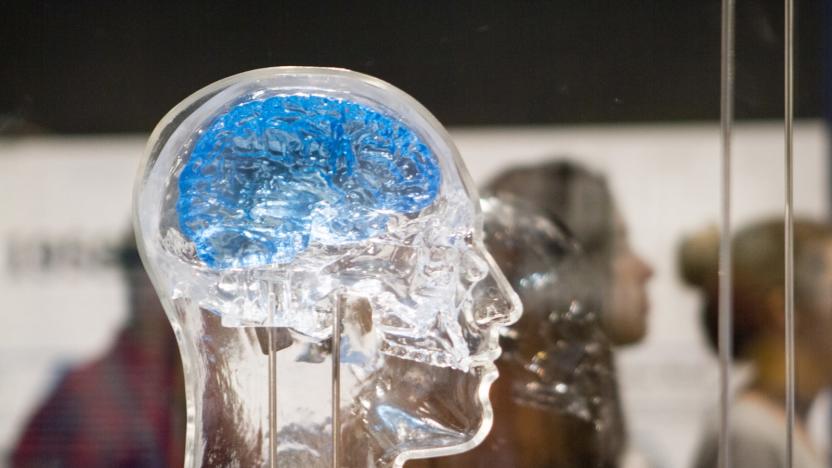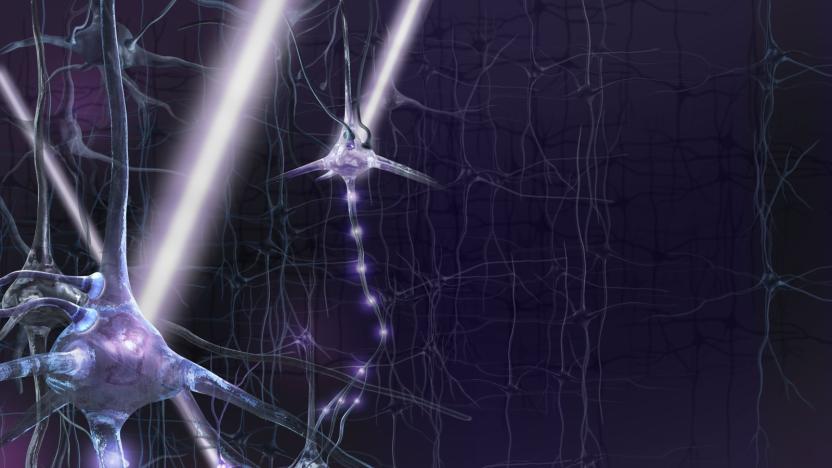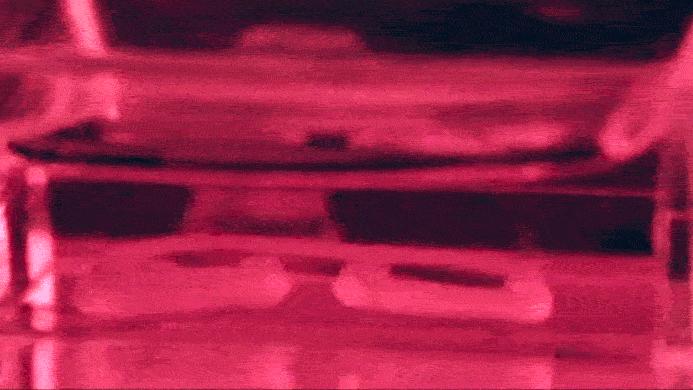optogenetics
Latest

Researchers combine gene therapy and event cameras to partially restore a blind man's sight
A formerly blind patient has unexpectedly had a portion of his visual perception restored thanks to a cutting-edge hybrid biological-technological therapy known as optogenetics.

Brain mapping could lead to better Parkinson's treatments
When you repair electronics, you frequently test individual parts to see how they affect the whole. Why not try that with the brain? Stanford is doing just that. It developed a technique that fires specific kinds of neurons to map the brain and identify problems caused by Parkinson's and other diseases. The approach first uses optogenetics to make neurons activate in response to light, and follows up with a functional MRI scan to look for the increased blood flow that indicates activity in other brain regions. A computational analysis maps that particular neural circuit and helps determine its role.

ICYMI: Hawaiian crows are our new favorite animal
try{document.getElementById("aol-cms-player-1").style.display="none";}catch(e){}Today on In Case You Missed It: Scientists filmed young Hawaiian crows and discovered that they're so smart, they figured out how to use tools to get food without ever having been taught by adult crows. There are very few Alala in the world, but some are about to be released back into the wild so researchers are excited they'll bring their stick engineering ways with them.

Scientists use light to nuke cancer cells in mice
In the great fight against cancer, scientists look for solutions that are both effective and less ravaging than current treatments like chemotherapy. One experimental concept, optogenetics, uses light to reduce or eliminate cancer cells. Researchers at UT San Antonio have devised a method using this school of treatment to attack inoperable or hard-to-reach tumors, which could give options to patients who were considered too high of risk to help.

Researchers use light and genes to fight cancer
Scientists have already shown that you can use optogenetics (that is, light-sensitive genes and cells) to treat all kinds of medical conditions. However, it now looks like that technique could conquer one of humanity's biggest nemeses: cancer. Tufts University researchers have successfully used optogenetics to prevent and even reverse tumor growth in experiments. They injected frog embryos with genes that produced light-sensitive ion channels in tumor cells; when you expose those tumors to blue light for long enough (roughly a day) and adjust their electrical signals, they go away.

Blind woman may see thanks to gene therapy and light
Optogenetics, or mixing gene therapy with light treatments, is finally getting a proper field test: doctors have given a blind Texas woman the first optogenetics-based therapy in hopes of restoring some of the vision lost to a degenerative retina disease. The procedure injected her eye with viruses containing DNA from light-sensitive algae, letting them mimic the eye's rods and cones by generating electricity whenever they're subjected to light. The patient won't get full vision even if the therapy is a runaway success, but it could be enough to let her know when there's nearby activity.

Watch tissue-based robots move in response to light
Researchers have modified muscle cells to move in response to light, which could eventually result in "bio-bots" useful for health or environmental applications. The breakthrough was made possible by the rapidly expand field of optogenetics, in which algae genes are spliced with muscle tissue from mice to make it sensitive to blue light. The team from the University of Illinois started with a 3D-printed hydrogel skeleton, then looped a ring of the modified tissue around. By firing a flash intermittently, they were able to make the muscle move, and even "exercise" it to become stronger.

LED implants could ease your pain
One day, eliminating pain may just be a matter of flicking on a light. Scientists have shown that you can implant LEDs that stop neurons from firing and cut out pain reception. The current technique (tested in mice) requires altering the neurons' DNA -- you couldn't just stick them in anyone. They're soft, however, and safe enough that you can leave them under the skin for long periods of time without limiting motion or wrecking tissue.

Lasers help prove parts of the brain 'sleep' while you're awake
Have you ever spaced out in the middle of a conversation without dozing off completely? MIT scientists now have a better idea why: only part of your brain is sleeping while the rest stays awake. Neuroscientists always suspected that, but the MIT team proved it in mice by using "optogenetics" to stimulate a part of the brain associated with sleep. They showed that the "thalamic reticular nucleus" (TRN) not only triggers slow sleep waves across the brain, but controls individual regions as well. The research could lead to safer anesthetic techniques and improved drugs for insomniacs.

Researchers control fruit flies' hearts with a laser
Scientists have directly controlled animals before, but these approaches tend to either require surgery or only work with critters at certain stages in their lives. Researchers might have a more powerful technique in store, however: they've managed to control fruit flies' heartbeats through laser pulses. The approach relies on optogenetics, or modifying the genes of animals to produce materials that respond to light. In this case, the team tweaked flies' heart cells to produce light-sensitive proteins. After that, it was just a matter of zapping the hearts to make them beat on command, whether the flies were larvae or full-grown insects.

Scientists stimulate mouse brains with wireless 'charger'
For reasons we'll soon explain, turning on a light inside a mouse's head can help scientists map brain function. It's easy to implant an LED in a mouse's brain, but how to power it? Until now, the mice either needed to be tethered to a fiberoptic cable or fitted with heavy wireless charging devices. However, Stanford scientists managed to build an implant that's not only lightweight, but able to receive consistent amounts of wireless energy.

Universities inject neuron-sized LEDs to stimulate brains without a burden (video)
Existing methods for controlling brain activity tend to skew the results by their very nature -- it's difficult to behave normally with a wad of optical fibers or electrical wires in your head. The University of Illinois and Washington University have developed a much subtler approach to optogenetics that could lift that weight from the mind in a very literal sense. Their approach inserts an extra-thin ribbon into the brain with LEDs that are about as big as the neurons they target, stimulating deeper parts of the mind with high precision and minimal intrusion; test mice could act as if the ribbon weren't there. The solution also lets researchers detach the wireless transceiver and power from the ribbon to lighten the load when experiments are over. Practical use of these tiny LEDs is still a long ways off, but it could lead to both gentler testing as well as better treatment for mental conditions that we don't fully understand today.

Researchers develop 'wireless optical brain router' to manipulate brain cells
Optogenetics might be a relatively unknown area of neuroscience, but it's one that, thanks to some new research, could soon find itself (and its rodental subjects) in the spotlight. For the uninitiated, it's the practice of manipulating animal cells using light (with a little help from gene therapy). Until now, optogenetic equipment has been large and unwieldy, making testing on subjects (read: rats) painstaking. Startup, Kendall Research, has changed all this, creating wireless prototypes that weigh just three grams (0.11 ounces). By eschewing bulky Lasers for LEDs and Laser diodes, the equipment is small enough that it can be attached to the rodents. At that point, their brain function can be manipulated with the touch of a button, and different parts can be stimulated without breeding mutant variants -- a controversial practice that doesn't even yield results in real time. The "router" is powered wirelessly by super capacitors below test area, and researchers can conduct experiments remotely, even automatically. Human applications for this are still some way off, but we're sure our future overlords will make good use of it.

Optogenetics hold the key to future brain disease cures, still creep us out
Those mad neuroscientists, they'll never learn, but maybe in the end we'll all be better off for it. Wired has put together an extremely intriguing write-up of the short history of optogenetics -- featuring a German pond scum researcher, a Nobel Prize winner, and rat brains controlled by beams of light. Optogenetics is a relatively new technique for communicating with the brain, which involves the implantation of particular light-sensitive genes into animals with the purpose of repairing neurological ailments through light therapy (no, not that kind). By hooking up fiber-optic cables to the affected area of the brain, researchers have been able to completely restore movement in mice with Parkinson's disease and their current efforts revolve around developing a less invasive method that doesn't go deeper than the outer surface of the brain. Most revolutionary of all, perhaps, is the eventual possibility for two-way traffic (i.e. a machine being able to both send and receive information from the brain), which brings all those cyborg dreams of ours closer to becoming a reality than ever before. Hit up the read link for the full dish.





